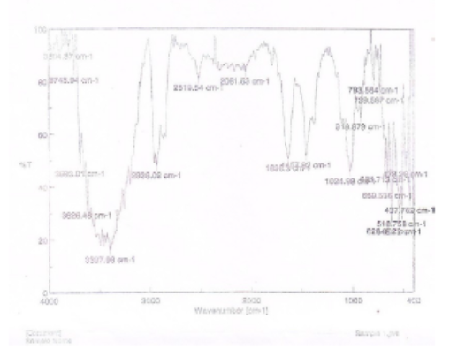


Journal of Pharmaceutical Research
DOI: 10.18579/jopcr/v20.2.vidya
Year: 2021, Volume: 20, Issue: 2, Pages: 1-5
Original Article
Vidya Peddi1, Harish Kumar1,∗
1Department of Pharmaceutical Chemistry, Krupanidhi College of Pharmacy, Bangalore, Karnataka, India
India has a long history of using medicinal plants for therapeutic purposes. Despite advancements in contemporary medicine, plant-derived substances remain crucial for the discovery of new drugs. Achyranthes aspera, a widespread plant in tropical regions, exhibits several medicinal activities, including anti-inflammatory, anti-cancer, and liver-protective activities. Nevertheless, few studies have investigated the isolation and characterisation of bioactive compounds from the aerial parts of Achyranthes aspera. Phytoconstituents of the aerial parts of Achyranthes aspera were isolated using two methods: Column Chromatography (isolation-I) and extraction and recrystallisation (isolation-II). Petroleum ether, methanol, water, and ethyl acetate were used for plant extraction. Column chromatography fractions were examined by Thin-Layer Chromatography (TLC), High-Performance Thin-Layer Chromatography (HPTLC), High-Performance Liquid Chromatography (HPLC), and spectroscopic methods (IR, NMR, and MS) for structural elucidation. The phytosterol compound (AA1) was purified and identified. The compound exhibited a melting point ranging from 198 to 202°C, and its molecular weight was calculated to be 412.37 g/mol. Its sterol structure was verified by spectroscopic analysis using IR, NMR, and MS, offering detailed information on its molecular configuration. HPLC analysis revealed that AA1 was of high purity. This study isolated and characterised a new phytosterol compound from Achyranthes aspera, highlighting the medicinal potential of the plant.
Keywords: Achyranthes aspera, Phytosterols, Column Chromatography, HPLC, Spectroscopic Analysis
© 2021 Published by Krupanidhi College of Pharmacy. This is an open-access article under the CC BY-NC-ND license (https://creativecommons.org/licenses/by-nc-nd/4.0/)
Subscribe now for latest articles and news.